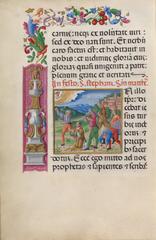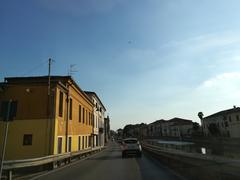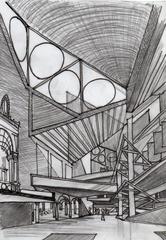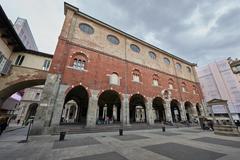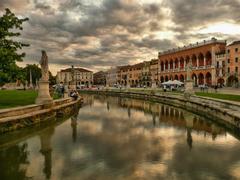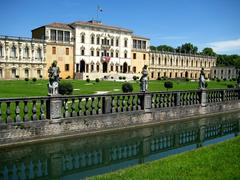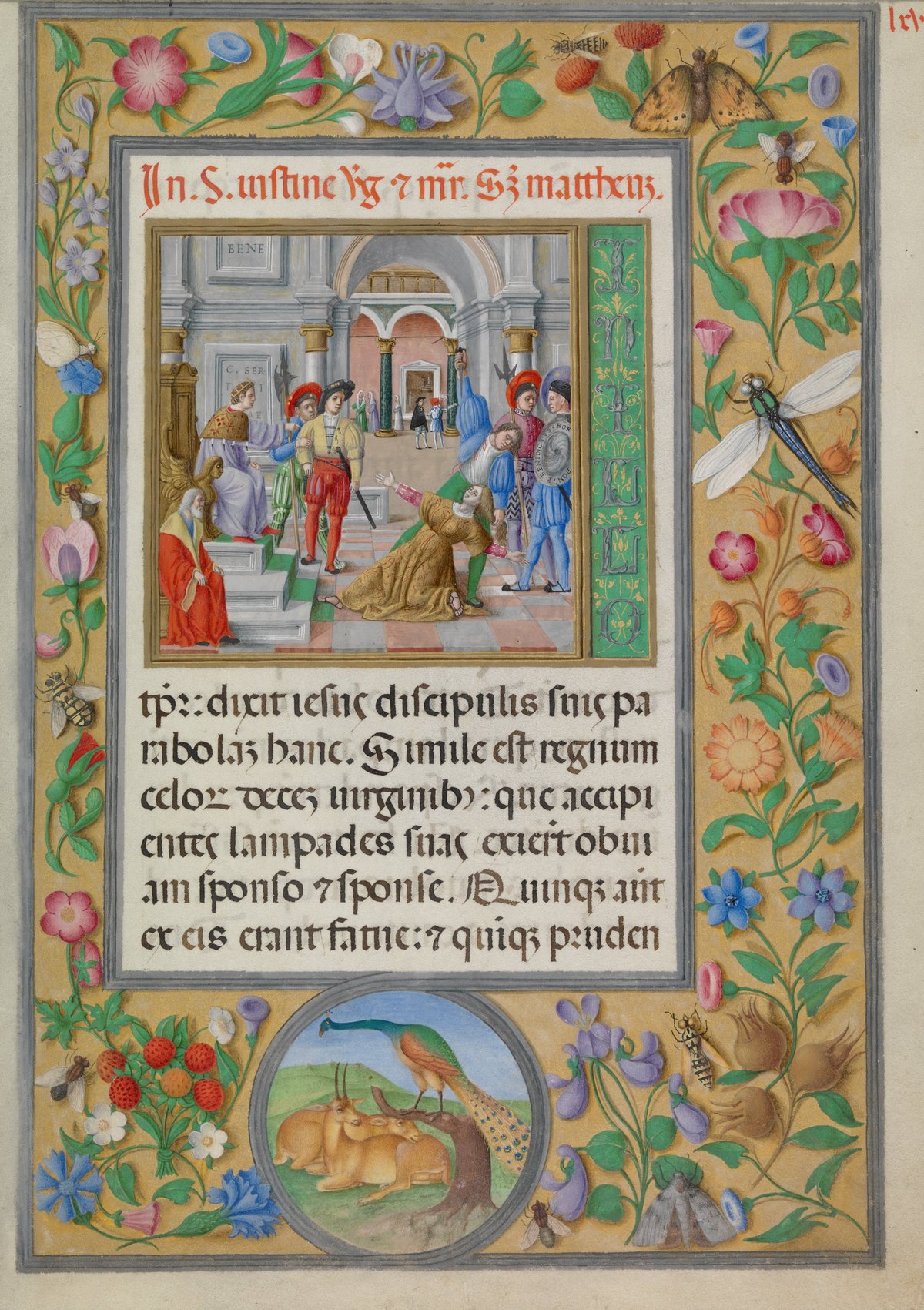
Guide to Visiting Abbazia di Santa Giustina, Padua, Italy
Date: 23/07/2024
Introduction
Nestled within the historic city of Padua, Italy, the Abbazia di Santa Giustina stands as a remarkable testament to religious devotion, artistic achievement, and scholarly pursuit. Founded in the early Christian era, this venerable abbey has witnessed centuries of transformation and development, making it an iconic landmark that seamlessly integrates spirituality, culture, and historical significance. Visitors to the Abbazia di Santa Giustina are treated to an enriching experience that spans architectural marvels, invaluable manuscripts, and a profound sense of history. This comprehensive guide aims to provide everything you need to know about visiting the Abbazia di Santa Giustina, including its historical background, architectural brilliance, visitor information, and travel tips. Whether you’re a history enthusiast, an architecture admirer, or a spiritual pilgrim, the Abbazia di Santa Giustina offers a multifaceted glimpse into the rich heritage of Padua (Padua Tourism, Benedictine Monasticism, Renaissance Architecture).
Table of Contents
- Introduction
- History of Abbazia di Santa Giustina
- Architectural Highlights
- Cultural Significance
- Visitor Information
- Nearby Attractions
- Conservation and Preservation Efforts
- FAQ
- Conclusion
History of Abbazia di Santa Giustina
Early Origins and Foundation
The Abbazia di Santa Giustina, located in Padua, Italy, has a rich history that dates back to the early Christian era. Named after Saint Justina of Padua, a Christian martyr executed during the reign of Emperor Diocletian in 304 AD, the abbey was founded on the site of her martyrdom. The first church dedicated to Saint Justina was built in the 5th century by Bishop Maximus of Padua, serving as a modest basilica for worship and pilgrimage (Padua Tourism).
Medieval Expansion
Significant expansion occurred during the medieval period when the Benedictine monks took over the administration of the abbey in the 10th century. This led to a period of growth and prosperity, with the monks playing a crucial role in the cultural and spiritual life of the region. They established a scriptorium and a library that became renowned for its collection of manuscripts and scholarly works. The abbey also became a center for agricultural development, introducing advanced farming techniques and managing extensive lands (Benedictine Monasticism).
Renaissance Rebuilding
The most significant transformation of the Abbazia di Santa Giustina occurred during the Renaissance. In the early 16th century, the abbey was almost entirely rebuilt under the direction of architect Andrea Moroni. This reconstruction featured a grand basilica with a Latin cross plan, a large central dome, and several chapels dedicated to various saints. The interior was adorned with frescoes, sculptures, and altarpieces by prominent artists of the time, including Paolo Veronese and Girolamo Campagna (Renaissance Architecture).
Napoleonic Suppression
The abbey’s fortunes took a dramatic turn during the Napoleonic Wars when Napoleon’s forces invaded northern Italy in 1797. The monks were expelled, and the abbey’s vast estates were confiscated. The church was stripped of many of its treasures, and the buildings fell into disrepair. However, the abbey’s library and some of its artworks were preserved and transferred to other institutions (Napoleonic Wars).
19th and 20th Century Revival
The 19th and 20th centuries saw efforts to restore and revive the Abbazia di Santa Giustina. In 1919, the Benedictine monks returned, initiating a period of restoration and renewal. The church and monastic buildings were repaired, and the abbey once again became a center for religious and cultural activities. The monks reestablished the library and scriptorium, continuing the abbey’s tradition of scholarship and learning, and it became a popular destination for pilgrims and tourists (Benedictine Revival).
Modern Day Significance
Today, the Abbazia di Santa Giustina stands as a testament to the enduring legacy of monasticism and religious devotion in Italy. It remains an active Benedictine monastery, with a community of monks dedicated to prayer, work, and study. The church continues to be a place of worship and pilgrimage, attracting visitors from around the world. Its library and archives are valuable resources for scholars and researchers, housing a vast collection of manuscripts, books, and historical documents (Abbazia di Santa Giustina Official Site).
Architectural Highlights
The architectural features of the Abbazia di Santa Giustina are a blend of various styles, reflecting its long and complex history. The Renaissance basilica, designed by Andrea Moroni, is the centerpiece of the abbey complex. The church’s façade is characterized by its classical proportions and elegant details, while the interior boasts a harmonious blend of Renaissance and Baroque elements. The central dome, inspired by the work of Michelangelo, provides a sense of grandeur and lightness to the space. The chapels and altars are adorned with artworks by renowned artists, including Paolo Veronese and Girolamo Campagna.
Cultural Significance
The Abbazia di Santa Giustina is a repository of art, music, and literature. Its library, one of the oldest in Italy, contains rare manuscripts, incunabula, and early printed books, providing invaluable insights into the intellectual and cultural history of the region. The abbey has also been a center for musical innovation, with its choir and organ integral to the development of sacred music. The abbey’s acoustics and architectural design make it an ideal venue for concerts and musical events, attracting artists and audiences from around the world (Music and Monasteries).
Visitor Information
Visiting Hours
The Abbazia di Santa Giustina is open to visitors from Monday to Saturday, 9:00 AM to 6:00 PM, and on Sundays from 10:00 AM to 5:00 PM. Please check the official website for any changes in visiting hours.
Ticket Prices
Admission to the abbey is free, but donations are welcome to support the maintenance and preservation of the site.
Travel Tips
- Getting There: The abbey is easily accessible by public transport, with several bus routes stopping nearby. It’s also a pleasant walk from the city center.
- Nearby Attractions: While in Padua, consider visiting other historical sites such as the Scrovegni Chapel, Prato della Valle, and the Basilica of Saint Anthony.
- Accessibility: The abbey is wheelchair accessible, with ramps and elevators available for visitors with mobility issues.
Nearby Attractions
The Abbazia di Santa Giustina is located in the heart of Padua, a city rich in history and culture. Nearby attractions include the Basilica of Saint Anthony, the Scrovegni Chapel, and the Prato della Valle, one of the largest squares in Europe.
Conservation and Preservation Efforts
The significance of the Abbazia di Santa Giustina is also reflected in the ongoing conservation and preservation efforts. As a protected heritage site, various initiatives are in place to maintain its structural integrity and preserve its artistic treasures. These efforts are supported by both public and private entities, ensuring that the abbey remains a vital part of Padua’s cultural heritage for future generations (Heritage Conservation).
FAQ
What are the visiting hours for Abbazia di Santa Giustina? The abbey is open from Monday to Saturday, 9:00 AM to 6:00 PM, and on Sundays from 10:00 AM to 5:00 PM.
Is there an admission fee? Admission is free, but donations are welcome.
How can I get to the abbey? The abbey is accessible by public transport and is a short walk from the city center.
Are there any nearby attractions? Yes, you can visit the Scrovegni Chapel, Prato della Valle, and the Basilica of Saint Anthony.
Is the abbey wheelchair accessible? Yes, the abbey is equipped with ramps and elevators for visitors with mobility issues.
Conclusion
The Abbazia di Santa Giustina is not merely a historical site; it is a living testament to the enduring legacy of monasticism and religious devotion in Italy. From its early origins honoring Saint Justina of Padua to its role as a center of learning and culture, the abbey has continuously evolved while preserving its spiritual essence. Today, it stands as a beacon for pilgrims, tourists, and scholars alike, offering a serene and enriching experience that is deeply rooted in history and culture. The abbey’s architectural splendor, combined with its significant religious and cultural heritage, makes it a must-visit destination for anyone exploring Padua. As you plan your visit, keep in mind the practical information provided in this guide to ensure a respectful and enjoyable experience. The Abbazia di Santa Giustina is a jewel of Padua that invites visitors to explore its hallowed halls and immerse themselves in its rich historical tapestry (Padua Tourism, Sacred Destinations, Catholic Encyclopedia).
References
- Padua Tourism, n.d. Padua Tourism
- Benedictine Monasticism, n.d. Benedictine Monasticism
- Renaissance Architecture, n.d. Renaissance Architecture
- Sacred Destinations, n.d. Sacred Destinations
- Catholic Encyclopedia, n.d. Catholic Encyclopedia

